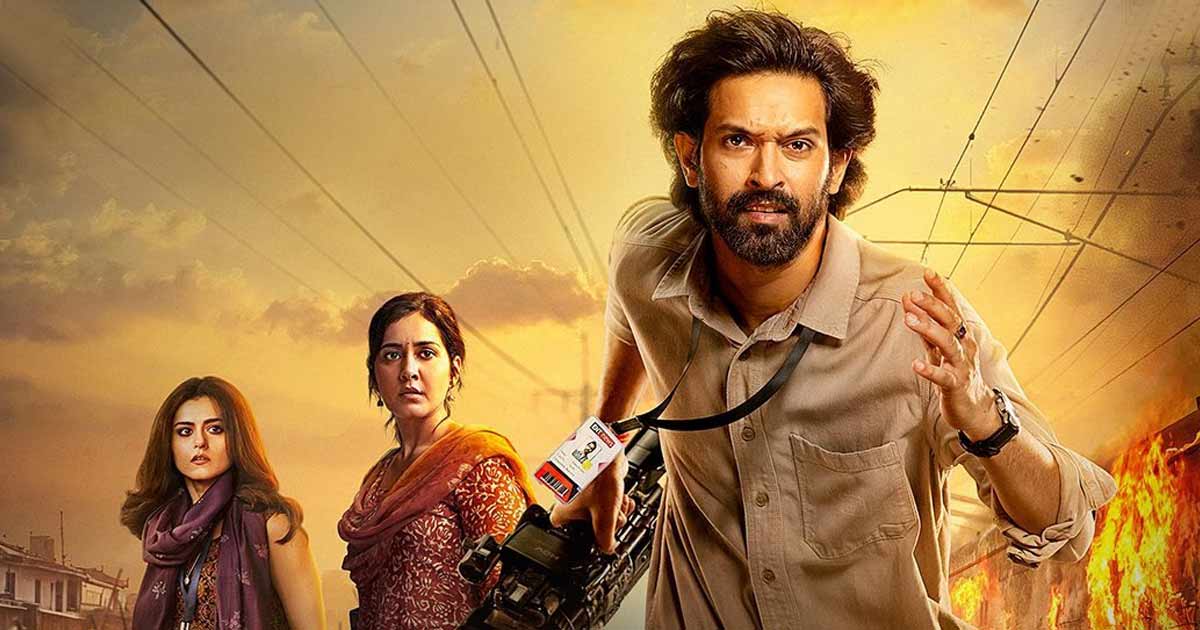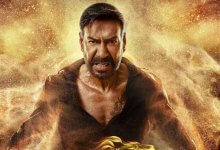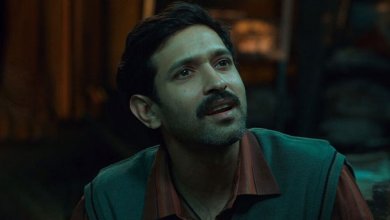The Sabarmati Report

Star Cast: Vikrant Massey, Raashii Khanna, Riddhi Dogra, Barkha Singh
Director: Ranjan Chandel & Dheeraj Sarna
What’s Good: The fast pace and crisp narration
What’s Bad: The outcome of the court scene as shown and the accosting of the main villain look contrived and fake, and more liberties are also taken.
Loo Break: Nothing to say!
Watch or Not?: As a factual drama, just alright. As a thriller ‘inspired by reality’ as claimed in the disclaimers, ditto!
Language: Hindi
Available On: Theatrical release
Runtime: 162 Minutes
The Sabarmati Report Movie Review: Exploring the Media’s Role in Post-Godhra
The tragic Godhra massacre of 2002, in which 59 people—kar-sevaks returning from Ayodhya—lost their lives when two coaches of the Sabarmati Express were set on fire, remains a painful chapter in India’s history. “The Sabarmati Report” delves into the aftermath of this tragedy, focusing on how the media shaped public perception in its wake. The film centers around a fictional news channel, EBT News, which manipulates the narrative to serve the interests of a political party, using ethical and unethical journalism as a lens to examine these events.
Script Analysis
While the story’s relevance is undeniable, especially given the political climate of 2002, the film leans heavily on the media’s influence, almost to the detriment of the broader narrative. The legal journey, which saw multiple twists and turns before the Supreme Court sentenced 31 individuals—11 of whom received the death penalty in 2011—is somewhat overshadowed by the focus on three journalists: Manika Rajpurohit (Monica Dogra), Amrita Gill (Raashii Khanna), and Samar Kumar (Vikrant Massey).
Manika is portrayed as a seasoned journalist who controls what the public learns through her work with EBT News, which has clear political affiliations. Amrita, a newcomer, once admired Manika but soon finds herself at odds with her idol’s approach. Meanwhile, Samar, a principled Hindi journalist, stands as a symbol of ethical reporting, though his career and personal life suffer as a result of his integrity.
Samar’s decision to record his own version of events during the Godhra incident, independent of the official narrative, becomes pivotal. His footage, hidden for years, resurfaces in 2007 when Amrita, now working on her own investigation, reconnects with him. Together, they return to Godhra to seek the truth.
However, the film’s court scenes, particularly the climactic one, fail to fully deliver the impact they promise. The legal drama feels underdeveloped, and the resolution of the journalists’ quest for truth seems overly simplified. Samar’s long-hidden cassette, for instance, miraculously survives and plays a crucial role, though the logic behind it feels strained.
Star Performances
Vikrant Massey anchors the film with his portrayal of Samar, bringing both gravitas and vulnerability to the role. He effectively conveys the frustrations of a man grappling with both personal and professional challenges. Monica Dogra, as the self-assured and morally ambiguous Manika, embodies the role of a media personality manipulating facts. Raashii Khanna, while competent as Amrita, isn’t given enough depth or screen time to make a lasting impression.
Direction and Music
The film’s directorial journey faced turbulence when Rajesh Chandel, the original director, departed, leaving co-writer Dheeraj Sarna to take over. This change in leadership seems to have contributed to the film’s uneven treatment of its weighty subject matter. While there are moments of brilliance, the overall execution feels muddled.
The music doesn’t leave much of an impact, apart from a couple of traditional tracks, while the background score serves its purpose without standing out.
Final Thoughts
“The Sabarmati Report” offers a diplomatic take on a highly sensitive issue, carefully avoiding offense while navigating the complexities of post-Godhra India. While the film attempts to highlight the ethical dilemmas faced by journalists, it sometimes pulls its punches, leaving viewers wanting a more hard-hitting exploration. Ultimately, its caution may be both its strength and its weakness—providing a nuanced narrative but one that could have been more impactful.








